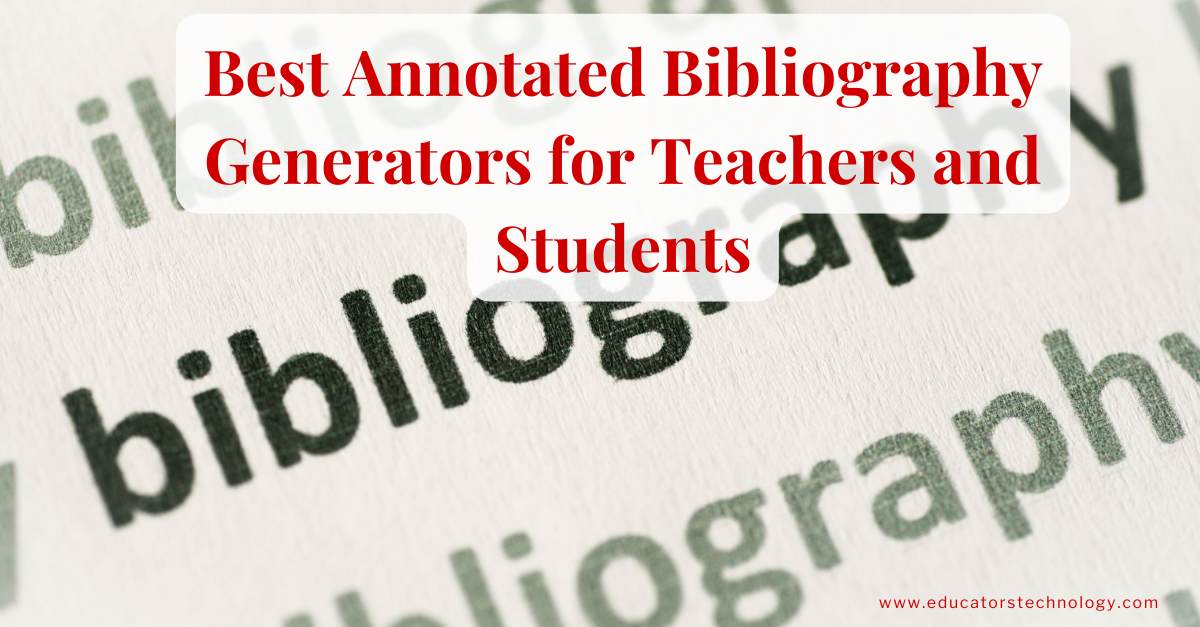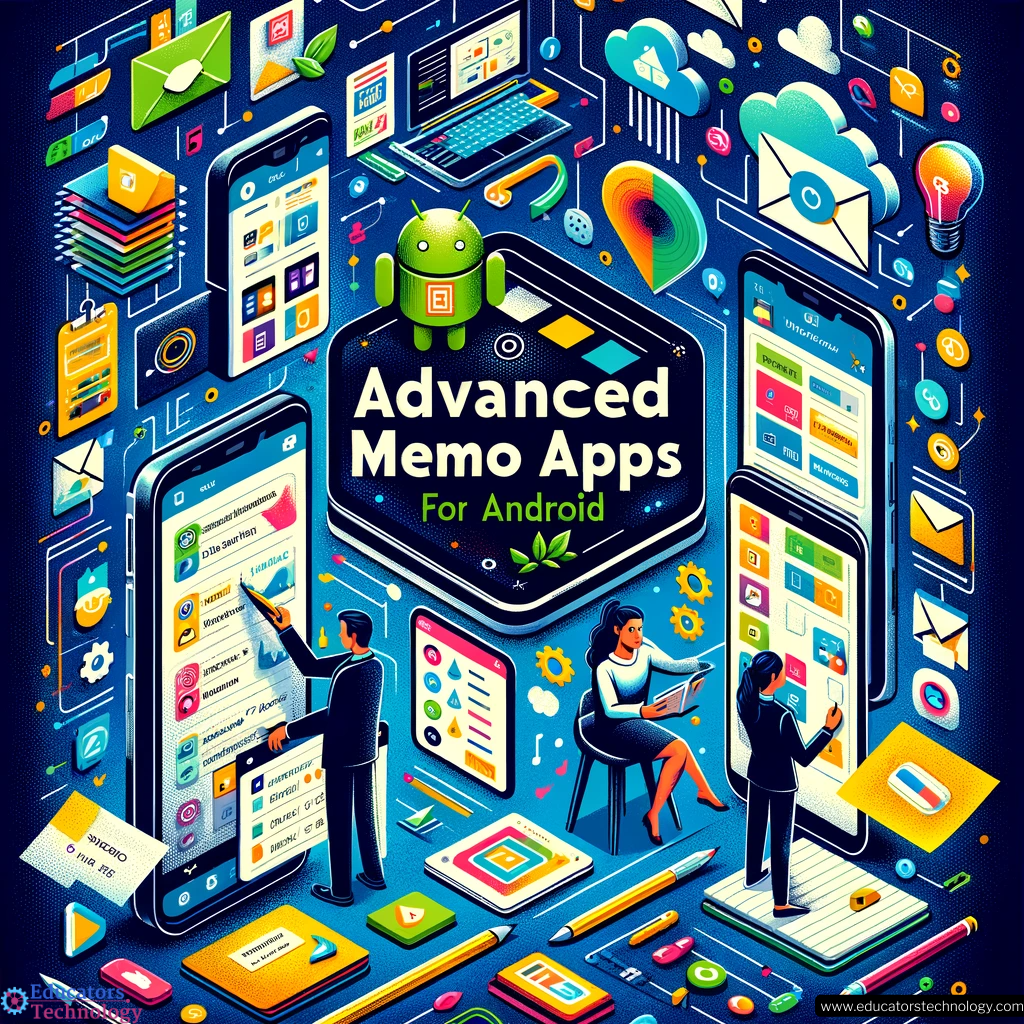Best Annotated Bibliography Generators for Teachers and Students
What is an annotated bibliography?To start with, let's first break down the phrase annotated bibliography into its components and define each one of them. A bibliography is basically a list of references of cited works that one used in their research. Annotation refers to 'a summary and/or evaluation'. As such, An annotated bibliography is a list of references in which each reference in the list is annotated, that is, it includes both the summary and the evaluation of the cited source. Unlike abstracts which are descriptive summaries, annotations go beyond mere description to critical evaluation. Annotations embed the annotator's reflections and point of view regarding the referenced work.How to create an annotated bibliography?Writing annotations require two main skills: close reading and analytical writing. To be able to write a concise summary of a given work you need to read it attentively and critically. A single reading is usually not enough. You need to read the work at least twice and usually more. The first reading is usually a quick scan to determine the relevance of the work to the topic of your annotated bibliography. The second and third reading is where you strip the work to its bare bones. As you read, you highlight key ideas, add notes to the margin, and note down your comments and reflections. Once done, go back to your highlights and comments and synthesize the whole thing into a concise summary that captures the main arguments of the work together with your own critical evaluation and reflection. What is the format of an annotated bibliography?An annotated bibliography is composed of two main sections: Bibliographic information and Annotation. The bibliographic information section contains the author name, date, title of the work, etc formatted in the citation style of your choice (e.g. APA, MLA, Chicago, etc). The annotation part consists of three main elements (it could be more and it could be less): Summary, Assessment, and Reflection.You first start with a brief summary of the cited material in which you highlight key arguments and topics covered. Next, you provide your own assessment of the cited work. For instance, you identify the weaknesses and strengths of the author's arguments and state how the work stands in comparison to other cited works. Finally, you add your own reflections on the source (e.g., its usefulness and relevance to your research, why you include it, etc).Why annotated bibliographies?According to Owl Purdue, there are many reasons why annotated bibliographies are important. First, they help you prepare well for your research project. Writing annotations is a task that calls for a deep level of engagement with the literature in your topic allowing you to identify patterns and issues and uncover gaps of knowledge in your area of interest. Annotated bibliographies enable you to know what has already been covered in your topic area so you don't reinvent the wheel and instead focus your efforts to produce rigorous research that adds real value. Also, annotated bibliographies written by other researchers, especially those published in academic journals can be of tremendous help. These are usually extensive bibliographies covering much of what has been done in a given research area. As a researcher, you can draw on these published annotated bibliographies to help familiarize you with the research done in your area and through it you can discover seminal work and foundational papers to read and cite in your own research. Annotated bibliography generatorsBelow are some good bibliography generators to help create annotated bibliographies. All of them work, more or less, in the same way: You start by generating a citation, add your annotation, and save your annotated entry. Most of these bibliography and citation generators require you to sign up to save your work. Registration is free but they also offer premium features for pro subscribers.1. ScribbrScribbr is one of my favorite citation and bibliography generators out there. It is simple and easy to use and supports a wide variety of cited sources including: webpages, journal articles, books, book chapters, conference proceedings, online magazine articles, online entries, online dictionary entries, presentation slides, press releases, podcast episodes, social media posts, reports, theses, speeches, TV shows, videos, Wikipedia entries, and many more.You can either search for your source by its title, URL, ISBN, or DOI and let Scribbr automatically generate all the bibliographic information. Or, you can choose to generate your citation manually in which case you need to type in bibliographic information yourself. Scribbr also supports multiple citation styles including APA 7 (and 6) MLA 9 (and 8), Harvard, and more. The site also offers an Annotation feature which allows you to type in or paste your annotation in the citation generator that automatically formats your annotations when you download your bibliography.2.

What is an annotated bibliography?
How to create an annotated bibliography?
Writing annotations require two main skills: close reading and analytical writing. To be able to write a concise summary of a given work you need to read it attentively and critically. A single reading is usually not enough. You need to read the work at least twice and usually more. The first reading is usually a quick scan to determine the relevance of the work to the topic of your annotated bibliography.The second and third reading is where you strip the work to its bare bones. As you read, you highlight key ideas, add notes to the margin, and note down your comments and reflections. Once done, go back to your highlights and comments and synthesize the whole thing into a concise summary that captures the main arguments of the work together with your own critical evaluation and reflection.
What is the format of an annotated bibliography?
An annotated bibliography is composed of two main sections: Bibliographic information and Annotation. The bibliographic information section contains the author name, date, title of the work, etc formatted in the citation style of your choice (e.g. APA, MLA, Chicago, etc). The annotation part consists of three main elements (it could be more and it could be less): Summary, Assessment, and Reflection.You first start with a brief summary of the cited material in which you highlight key arguments and topics covered. Next, you provide your own assessment of the cited work. For instance, you identify the weaknesses and strengths of the author's arguments and state how the work stands in comparison to other cited works. Finally, you add your own reflections on the source (e.g., its usefulness and relevance to your research, why you include it, etc).
Why annotated bibliographies?
According to Owl Purdue, there are many reasons why annotated bibliographies are important. First, they help you prepare well for your research project. Writing annotations is a task that calls for a deep level of engagement with the literature in your topic allowing you to identify patterns and issues and uncover gaps of knowledge in your area of interest. Annotated bibliographies enable you to know what has already been covered in your topic area so you don't reinvent the wheel and instead focus your efforts to produce rigorous research that adds real value.Annotated bibliography generators
Below are some good bibliography generators to help create annotated bibliographies. All of them work, more or less, in the same way: You start by generating a citation, add your annotation, and save your annotated entry. Most of these bibliography and citation generators require you to sign up to save your work. Registration is free but they also offer premium features for pro subscribers.1. Scribbr
Scribbr is one of my favorite citation and bibliography generators out there. It is simple and easy to use and supports a wide variety of cited sources including: webpages, journal articles, books, book chapters, conference proceedings, online magazine articles, online entries, online dictionary entries, presentation slides, press releases, podcast episodes, social media posts, reports, theses, speeches, TV shows, videos, Wikipedia entries, and many more.
You can either search for your source by its title, URL, ISBN, or DOI and let Scribbr automatically generate all the bibliographic information. Or, you can choose to generate your citation manually in which case you need to type in bibliographic information yourself.
Scribbr also supports multiple citation styles including APA 7 (and 6) MLA 9 (and 8), Harvard, and more. The site also offers an Annotation feature which allows you to type in or paste your annotation in the citation generator that automatically formats your annotations when you download your bibliography.
2. EasyBib
EasyBib is another good citation generator that offers an annotation tool that enables you to easily add annotations to citations. The way it works is simple and easy: First, you need to create a citation using the EasyBib citation generator. Fill in the form either manually or let EasyBib do it for you automatically. Once done, scroll down to the bottom of the form and click on More Options then click on Add annotation. In the annotation box, type in or paste your annotation. When your citation is generated your annotation will be automatically included and formatted with your citation. You can copy and paste it into your paper.
3. Citation Machine
Citation Machine by Chegg is another helpful bibliography generator to try out, well , if you can stand the annoying ads. It works like the other previous citation generators: you first start by selecting your citation style, type in your bibliographic information or use the automatic citation feature, click to generate your citation and in the final form click on Add annotation to insert your annotation. Once done click on Complete citation. Cite This for Me and BibMe are all Chegg services that are similar to Citation Machine. You can also use them to help with generating annotated bibliographies.
4. Bibliography
Bibliography.com is a bibliography generator I recently discovered. I tried it a couple of times and found it helpful. You can use it to generate annotated bibliographies for different sources and using different citation styles. Simply select your source from the list, search or enter data manually. In the edit form, scroll down to the bottom of the page and type or post your annotation in the annotation box then click on Cite. To share and export your annotated bibliography you need to sign up.










































